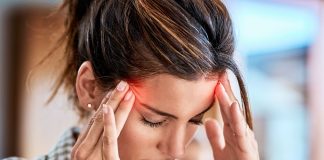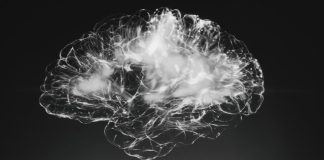Some people experience a “runner’s high”, which is a feeling of euphoria and relaxation that lasts for a short time. Running can cause headaches for some people.
Researchers first described exercise or exertion-related headaches in 1968. They can occur during or immediately after intense physical activity, such as heavy lifting, sneezing or running.
Exertion headaches can vary in severity from person to person. However, they are usually characterized by a pulsating sensation on both sides of your head. This is often compared to a migraine. They can last from a few seconds to a couple days. Some people experience multiple headache episodes.
There are still few scientific studies on exertion headaches, despite the fact that they affect anywhere between 1% to 26% of adults and up to 30% of teenagers.
It could be that they aren’t painful enough to stop people from exercising, or they stop when people stop exercising. Or they may overlap with other headaches like migraines and so people are treated instead for them. They could be more common than you think.
In studies that have involved a small number of people, headaches of this type are most common among people aged between 22 and 40, although they often begin before 30.
In these studies, men were also more likely than women to have them. They accounted for about 80% of those who took part. It will take more research to determine if men are more likely than women to suffer from them, and if so, for what reason.
Why they happen
Exercise increases blood flow to our brain to ensure that it has enough oxygen for us to move. This also means that our brains have to expel more CO2 and heat. Our blood vessels stretch to cope with this and can cause pain.
Exercise can trigger headaches for some people due to their different anatomy and physiology. For some, exertion headaches are caused by certain conditions.
Exercise in hot weather can be an example. The brain runs at a higher temperature than the rest the body and cannot dissipate the heat through sweating. It can only get rid of heat by increasing blood flow through the brain.
Exercise can increase brain temperature even more, as hot and humid weather increases the temperature of the brain. This causes blood vessels to swell to cope. This could explain why some people get a pulsating headache only when they exercise in hot weather.
Exercise at altitude can also increase the risk of headaches. This is because the blood’s oxygen-carrying ability is reduced at altitude. This means that more blood must be sent to the brain in order to provide all the oxygen needed, causing swelling and pain.
People with a family or personal history of migraine headaches may also be more prone to exertion-related headaches. This is because the same changes which cause migraines, such as changes in blood vessels size, are also responsible for exertion headaches.
How to prevent them
Exercise headaches will disappear shortly after stopping. It usually takes an hour or so for the headache to disappear, once your heart rate drops and there is less demand for oxygen in the brain.
If your headache is also caused by dehydration, you will need to replenish your fluids before it goes away. This usually takes three hours.
Over-the-counter pain medication, such as paracetamol and ibuprofen, may help if your symptoms persist or if your headache is especially painful. If you suffer from exertion headaches often, you may want to talk to your doctor about prescription drugs that can reduce symptoms and even prevent these headaches.
You can also do things to prevent headaches due to exertion.
Exercises that are strenuous after a period of inactivity can cause headaches because your cardiovascular system may not be able to cope.
It’s important to ease yourself back into exercise if you’ve not exercised in a while. Warming up slowly each time you exercise will help your circulatory systems cope with changes in blood flow and pressure.
It is also important to stay hydrated. This will ensure that the blood vessels in the brain can function properly. Resting enough will help your brain to function at its best, and you’ll feel less pain.
Exercise headaches can be annoying, but they shouldn’t stop you from exercising. This is especially true in warmer weather, when they are more common. Avoiding hot days and altitude, as well as a gradual warm-up, can help reduce your risk. Try other forms of exercise that do not maintain a high heart rate, such as weightlifting or yoga.

We understand how important it is to choose a chiropractor that is right for you. It is our belief that educating our patients is a very important part of the success we see in our offices.






